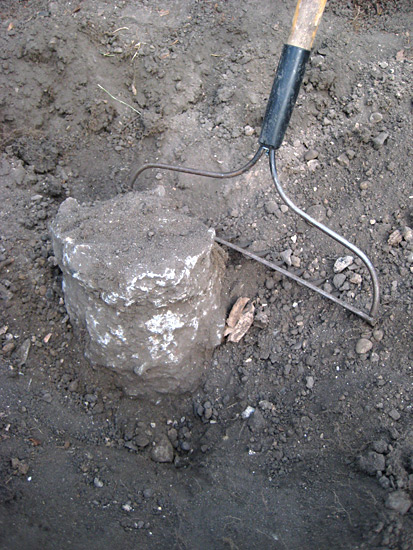It’s already Bloom Day again, the garden meme hosted by May Dreams Gardens, where monthly gardeners share what is blooming in their gardens. When looking back at last year’s September posts I realized we had been preparing for our trip to Ireland. Two years back at this time revealed the plants are further along than they were in 2013. We’ve had a strange September so far as the first week of the month resembled the “dog days of summer” usually prevalent in August. And then the weather cooled off, and then warmed back up again.
Beginning on the West side of the Lot, the huge cup plant featured in August’s bloom day post is beginning to fade and go to seed as is the cardinal flowers beneath the climbing rose. It is also beginning to lean over toward the property line which makes me nervous. I should cut it back but the curiosity of who will come to eat the seed is preventing me from doing so.
In the south bed, both little sedum are blooming at the bottom of our steps.
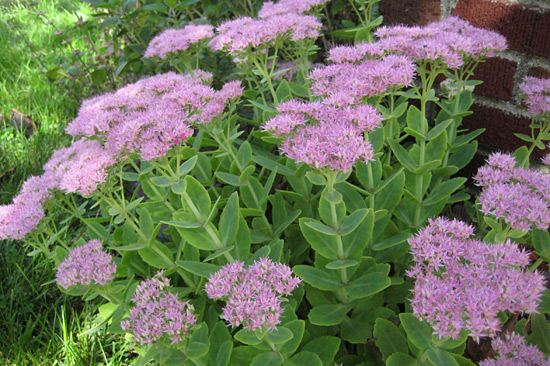
The plumbago is in full bloom and has filled in nicely around the growing smoke bush. The black eyed susan has only a handful of blooms left. Various coreopsis, blanket flower, and cone flower are beginning to slow, having bloomed the majority of the summer season. Our little potentilla shrub is still sharing its sunny, yellow blooms and the yew is sprinkled with its bright red seeds.
In the backyard, the autumn clematis has burst into bloom. I had cut it to the ground in spring, but that didn’t seem to deter it from growing quite huge this season.

Here’s a closer shot of the little blooms. They have a lovely scent.

In the fence bed, several new plants were added this season. (I did a lot of rearranging.) Here is a relocated hyssop, blooming its heart out after being moved from a shadier bed where it was struggling. The butterflies and hummingbirds seem to enjoy this plant.

In the backyard bed, there is more plumbago in bloom. Also, I finally found a bird bath I like! Here it is.

And here is a larger shot of the corner in that bed. I’m liking the combination of textures and colors right now.

On the other end of the backyard bed is the lone mum on the Lot. I forgot to pinch it back, so it grew long and leggy. However, the little blooms are pretty anyway.
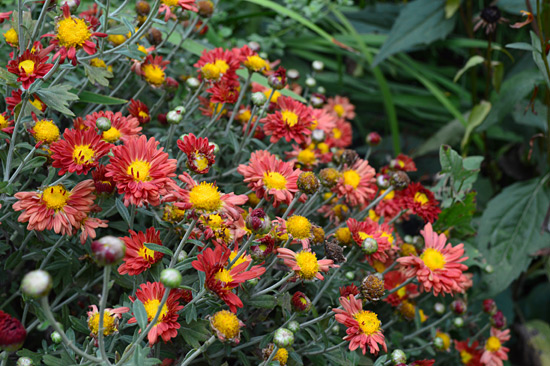
I expanded Loki’s bed this season since it was way overcrowded. In doing so, it now curves around and extends further down the fence line. Here is a pretty little tea rose I received this past March at the Smart Gardening conference. I had it in a pot most of the season, but now it finally has a home in the soil of the Lot.

And new bed space means new plants, right?! Here is an autumn fern I picked up while out plant shopping with Mrs. J.

I realize it is technically not a bloom, but the new fronds on this fern emerge as that beautiful, coppery orange color. Here is a closer look at the coloring.
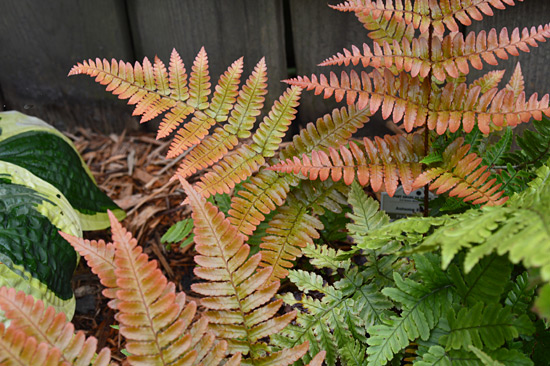
And here is the dainty, little blooms of the coral bell in Loki’s bed.

Some of the plants usually blooming in early spring now have volunteers popping up around the Lot. Such as with this little viola.
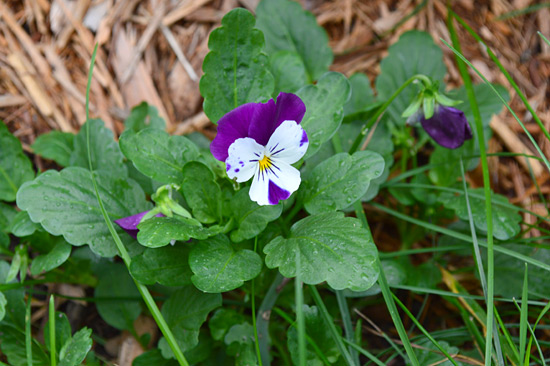
And they are also perking up in the hanging baskets while the rest of the plants appear a bit tired and overgrown. The pansies and snapdragons seem to have been renewed.

Also blooming in the backyard is the guara, a handful of black eyed susans, a foamy bell, phlox, and winter savory. The east bed has the toad lily beginning to bloom. In the alley bed, the sedum Autumn Joy is abuzz with pollinators because of it’s dusty rose blooms.

